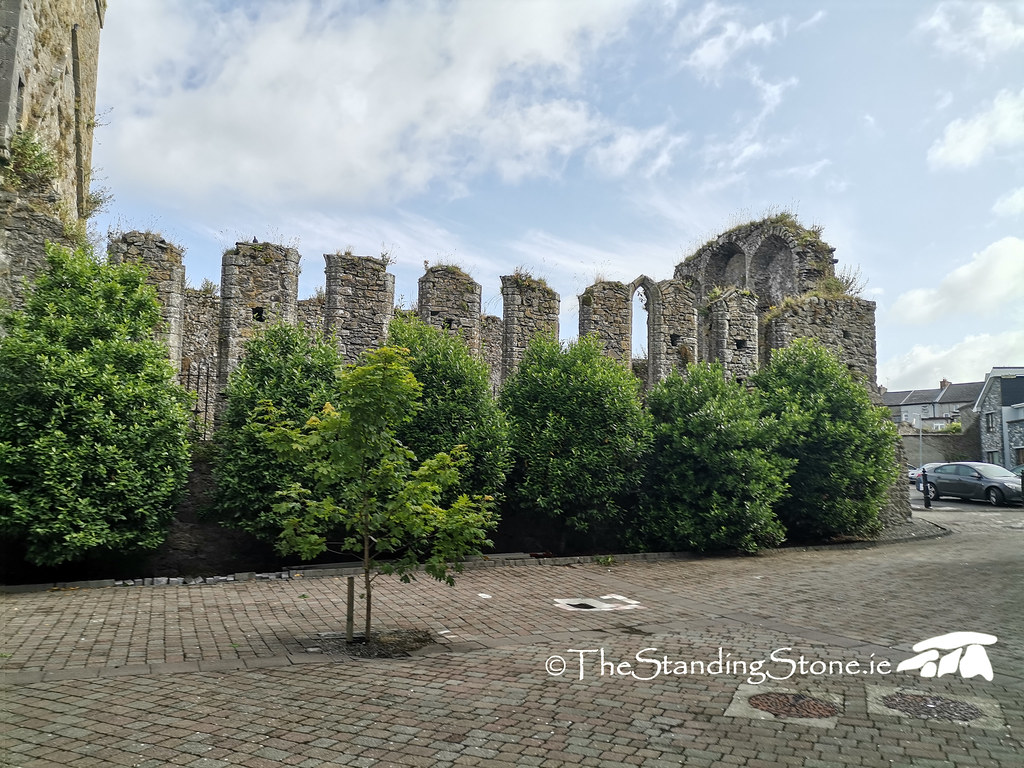Location – In the centre of Cashel in a housing estate on Dominic Street. Note that this is closed to the public, but can be viewed from outside.
OS: S 07655 40711
Longitude: -7.8879435
Latitude: 52.518020
Description and History - Sitting in the shadow of the Rock of Cashel, Dominic’s Abbey is in stark contrast with the modern residential buildings that surround it. Founded in 1243 by the Archbishop of Cashel, David MacKelly, St. Dominic’s Abbey was the home to Dominican friars for several hundred years. The original structure consisted of a simple nave and chancel church, with an aisle and transept being added around 1270. It was in this period that the Dominican friars of Ireland held their general chapters in 1289 and 1307. The building was largely destroyed by fire in 1480, and subsequently rebuilt by Archbishop John Cantwell. It was at this time that the bell tower was added to the remains of the original fire damaged structure. The windows were altered at this time as well, with the original gothic lancet windows being filled in, and replaced with fine examples of tracery style windows, in the east and west walls, and in the south transept. Lancet windows remain visible on the north wall of the abbey, while the base of 9 lancet windows can still be seen in the south wall of the chancel area. At the time of its rebuilding it was said that Dominic’s Abbey was the most beautiful Dominican building in Ireland. However, the structure only remained in use for another 60 years as it was eventually surrendered to Henry VIII during the dissolution of the monasteries in the 1540s. The building was later granted to Walter Fleming, a merchant of Cashel.
Within the structure today the remains of niche tombs can be seen embedded into the north wall of the chancel, while in the north wall of the nave the remains of two carved figures can be seen. One is a small figure, possibly a representation of the infant Jesus, while the other appears to the head of a larger effigy, possibly part of a series of effigies belonging to the Hackett family. Four complete effigies are situated in the graveyard of the nearby St. John the Baptist’s graveyard, and a partial effigy sits in the Hall of the Vicar’s Choral at the Rock of Cashel.
Near the entrance on the west wall of the church is the remains of a sarcophagus. A sarcophagus was generally carved from a single block of stone with a lid placed on top. It is likely that an effigy, possibly one of the examples that survive in Cashel today, once sat on top. Sarcophagi are relatively rare in Ireland with only 17 known examples, 3 of which are located in Cashel.
While the building was largely abandoned following the dissolution of the monasteries, the Dominicans retained a small presence in Cashel up until the 19th century, when the last Dominican Prior of Cashel, Father John Conway died in Cashel around 1866.
Along with the Rock of Cashel and Hore Abbey, St. Dominic’s Abbey serves as a reminder of Cashel’s rich medieval heritage.
Difficulty – Easy to find and get to, parking is right outside.
Date of visit – Various dated between 2020 and 2023.
For more sites in Co. Tipperary, click here.
For more ecclesiastical sites, click here.











































